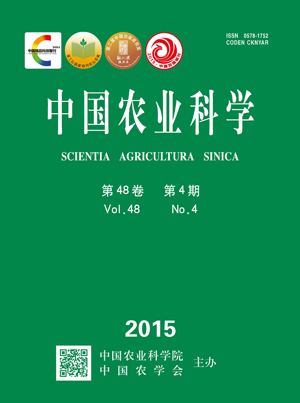-
Effects of Post-Anthesis Waterlogging, High Temperature and Their Combination on Starch Compositions and Pasting Properties in Wheat Grains
- WANG Chen-yang, ZHANG Yan-fei, LU Hong-fang, ZHAO Jun-xia, MA Geng, MA Dong-yun, ZHU Yun-ji, GUO Tian-cai, MA Ying, JIANG Yu-mei
-
Scientia Agricultura Sinica. 2015, 48(4):
813-820.
doi:10.3864/j.issn.0578-1752.2015.04.19
-
 Abstract
(
504 )
Abstract
(
504 )
 HTML
(
1 )
HTML
(
1 )
 PDF (374KB)
(
622
)
PDF (374KB)
(
622
)
 Save
Save
-
References |
Related Articles |
Metrics
【Objective】 Waterlogging(WL) and high temperature(HT) are major meteorological disasters to winter wheat after anthesis in both the middle and lower Yangtze Valley and the south of Huanghuai wheat production regions, which have a great impact on grain yield and quality of winter wheat. However, little is known on the effect of various stresses and their combination(WL+HT) on starch formation and quality in wheat grains. 【Method】 A pot experiment was conducted in the growing season of 2011-2013. Wheat cultivar Zhengmai 004, was treated with waterlogging and/or high temperature stress from the 5th to 14th day after anthesis. 【Result】The starch yield was reduced significantly under WL, HT and WL+HT stresses. The reduction percentages were 28%, 46% and 52%, respectively in 2011-2012 year and 27%, 43% and 61% in 2012-2013 year, respectively. Although slight increase of amylopectin concentration and decreases of amylose concentration and the ratio of amylose to amylopectin were observed in the experiment, there was no significant difference existed in starch compositions between WL and CK group. HT and WL+HT decreased the concentrations of amylose and amylopectin, and significantly decreased the concentration of total starch by 11.0% and 10.8%, respectively in 2011-2012 growing season, and by 8.2% and 5.5%, respectively in 2012-2013 growing season. WL significantly decreased the minimum viscosity(MV) in 2011-2012 growing season, but had no significant impact on any other pasting parameters. However in the growing season of 2012-2013, WL significantly increased the peak viscosity (PV) minimum viscosity(MV) , final viscosity(FV), breakdown and setback by 27.9%, 39.2%, 31.5%, 21.9% and 27.9%, respectively. HT significantly reduced the peak viscosity(PV) , minimum viscosity(MV) , final viscosity (FV) , breakdown and peak time(PT) by 22.2%, 22.0%, 16.9%, 22.5% and 4.8%, respectively in 2011-2012 growing season, and by 39.6%, 62.0%, 62.7%, 28.0% and 7.0%, respectively in 2012-2013 growing season. Effects of WL+HT combination on starch pasting properties differed between the experimental seasons. WL+HT significantly decreased PV, MV, FV and breakdown by 20.9%, 23.9%, 10.4% and 15.2%, respectively in 2011-2012 growing season, but increased by 15.4%, 30.2%, 7.1% and 6.4%, respectively in 2012-2013 growing season. Correlation analysis indicated that both the content of the total starch and amylopectin were positively correlated with PV, MV, FV and breakdown in both wheat cultivars. However, no significant correlations were obtained between the content of amylose and pasting properties in the experiment. 【Conclusion】 Post-anthesis WL and HT significantly reduced starch yield. And the combination stress of WL and HT(WL+HT) increased the damage. WL, HT and WL+HT strongly influenced starch content and its compositions, and resulted in obvious changes of starch pasting properties. In the current study, we also found that HT had a relatively greater influence on starch quality than that of WL. However, the combination stress didn’t improve the impact of HT on pasting properties, indicating that interaction existed between WL and HT.









